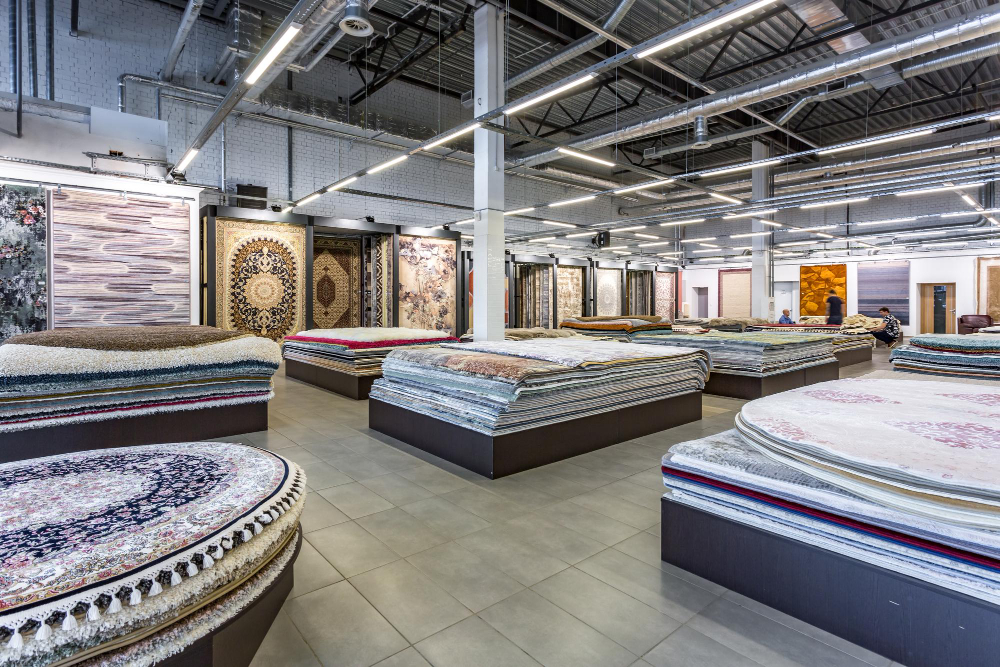
When it comes to finding the perfect rug, the material makes all the difference. From durability to texture and everything in between, the material you choose directly impacts how long your rug lasts, how it feels underfoot, and how well it fits your lifestyle.
If you’re on the hunt for the perfect rug in your search for a rug store in Arizona, this guide will help you understand the pros and cons of various rug materials so you can make an informed decision.
Why Rug Materials Matter
Rugs are more than just a visual addition to your home. Their material dictates crucial factors such as how easy they are to clean, how they hold up in high-traffic areas, and whether they’re suitable for families or pets. Choosing the right material ensures your rug not only looks great but meets your home’s practical needs.
Natural Rug Materials
1. Wool
Wool rugs are a top choice for many homeowners, and for good reason.
- Pros
- Highly durable and perfect for high-traffic areas.
- Naturally stain-resistant due to the material's lanolin content.
- Soft and warm underfoot, adding a cozy touch to your living spaces.
- Excellent insulation for both sound and warmth.
- Cons
- More expensive than synthetic options.
- May shed initially, requiring regular vacuuming.
Best for: Living rooms and bedrooms where comfort meets style.
2. Cotton
Cotton rugs are lightweight and budget-friendly, making them a versatile addition to your home.
- Pros
- Affordable and easy to maintain.
- Machine washable in smaller sizes.
- Comes in a range of colors and patterns.
- Cons
- Less durable than wool and prone to wear in high-traffic areas.
- Susceptible to fading over time.
Best for: Kitchens, kids' rooms, or casual spaces where affordability and easy cleaning are key.
3. Jute and Sisal
These plant-based materials create a rustic, textured look that pairs beautifully with natural decor.
- Pros
- Eco-friendly and biodegradable.
- Durable and perfect for high-traffic areas.
- Adds texture and warmth to a room.
- Cons
- Not ideal for areas with high moisture, as they absorb water easily.
- Can be rough underfoot compared to other materials.
Best for: Entryways, hallways, and dining rooms.
4. Silk
Silk rugs are the definition of luxury and finesse, but they require careful handling.
- Pros
- Adds a touch of elegance with its sheen and intricate detailing.
- Feels soft and smooth underfoot.
- Elevates the overall decor of any room.
- Cons
- Extremely delicate and not suitable for high-traffic areas.
- Requires professional cleaning.
- High price tag.
Best for: Low-traffic areas like formal living rooms or bedrooms.
Synthetic Rug Materials
5. Polypropylene
Polypropylene is a popular synthetic material due to its affordability and resilience.
- Pros
- Budget-friendly and highly durable.
- Resistant to stains, fading, and moisture.
- Soft and plush, mimicking the look of natural materials.
- Cons
- Can flatten in high-traffic areas over time.
- Not as eco-friendly as natural fibers.
Best for: Homes with pets, kids, or for outdoor use.
6. Nylon
Known for its strength, nylon is a common choice for busy households.
- Pros
- Exceptionally durable and resistant to high wear and tear.
- Easy to clean and maintain.
- Holds vibrant colors well.
- Cons
- Slightly more expensive than other synthetic materials.
- Not as soft or luxurious as wool or cotton.
Best for: High-traffic areas like hallways and playrooms.
7. Polyester
Polyester rugs are a great option for anyone looking for vibrant, soft rugs on a budget.
- Pros
- Affordable and available in vibrant, fade-resistant colors.
- Naturally stain-resistant.
- Cons
- Prone to flattening in high-traffic areas.
- Difficult to recycle, making it less eco-friendly.
Best for: Bedrooms or low-traffic rooms.
How to Choose the Right Material for Your Home
When shopping for the perfect rug, keep these factors in mind:
- Traffic Level: High-traffic areas call for durable materials like wool, nylon, or jute. Avoid delicate silk rugs in these spaces.
- Cleaning Requirements: Consider how easy it is to clean the material. For instance, machine-washable cotton rugs are perfect for kitchens, while wool rugs may need professional cleaning.
- Allergies: Synthetic options like polypropylene or nylon might be better for those with sensitivities to natural fibers.
- Style and Comfort: Soft, cozy wool or vibrant polyester rugs can add warmth and personality to your home. For added elegance, choose silk or a high-end wool option.
Supporting Sustainability with Your Rug Choice
For eco-conscious shoppers, look for natural, biodegradable materials like jute, sisal, or organic cotton. Alternatively, some synthetic rugs are made using recycled materials, offering a more sustainable option for synthetic fibers.
At Organic Looms, we believe in sourcing sustainable, high-quality materials, ensuring our rugs are a fit for your home and the planet.
Find Your Perfect Rug Today
Choosing the right rug material doesn’t have to be overwhelming. By understanding the characteristics of each material and matching them to your home’s needs, you can invest in a rug that enhances both your space and your lifestyle.
If you're looking for a rug store in Arizona that offers quality, variety, and expertise, contact Organic Looms today. With our curated selection and expert guidance, we’ll help you find the rug that’s just right for you.